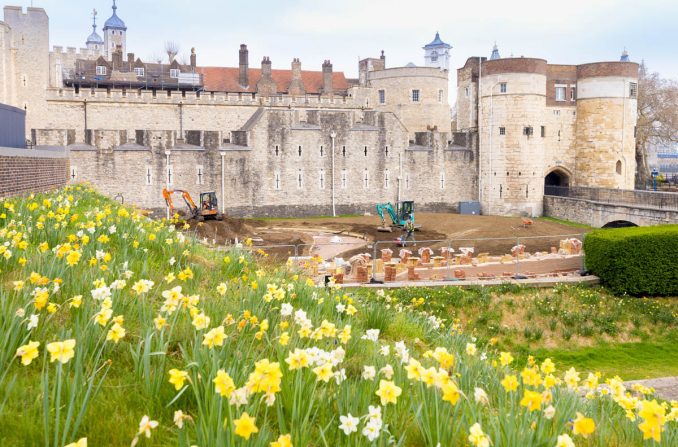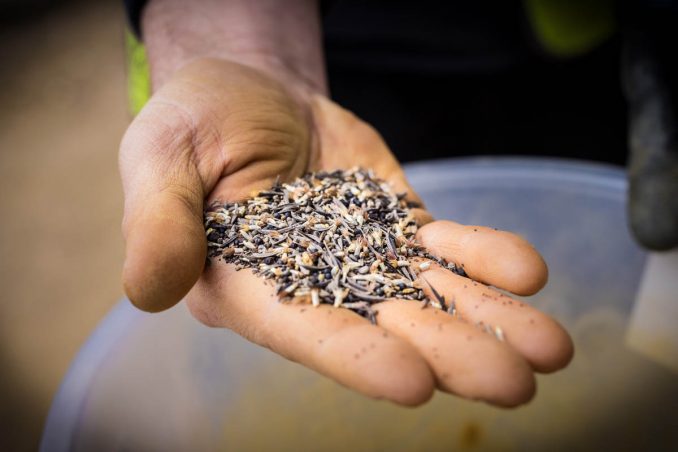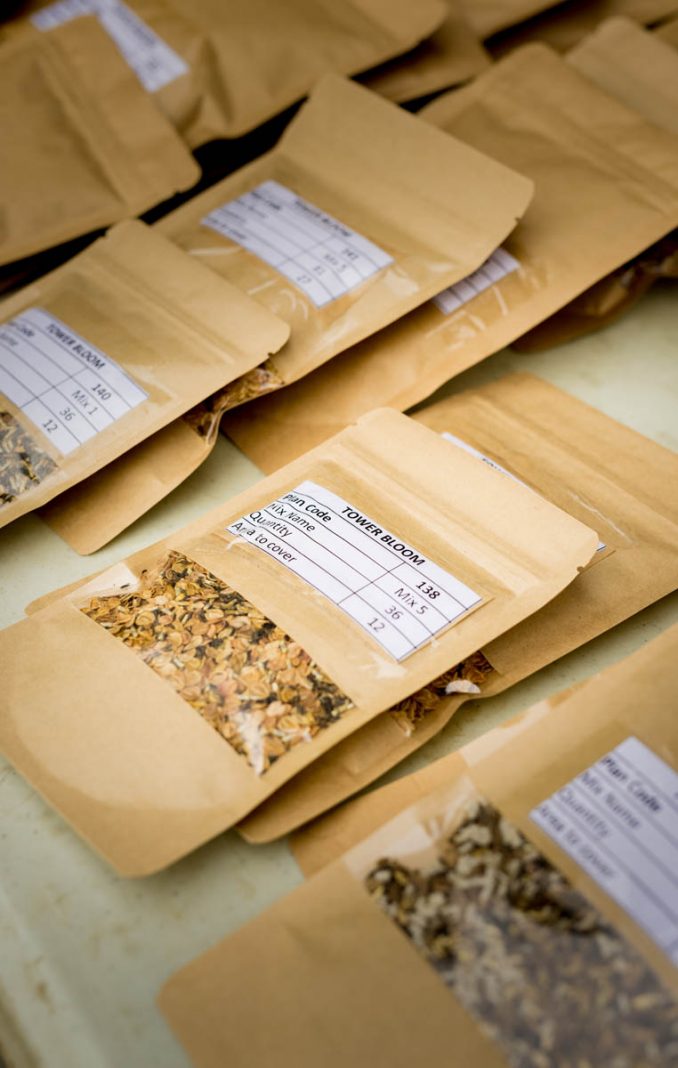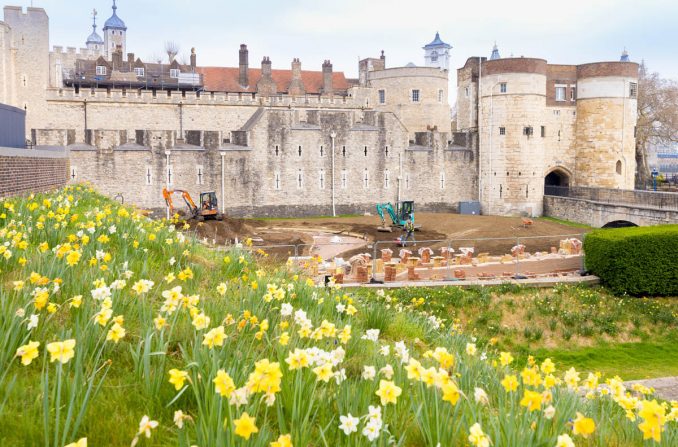‘Superbloom’ display opens to the public on 1 June 2022; a celebratory project being brought to life in a partnership between Historic Royal Palaces, award-winning landscape architects Grant Associates and the University of Sheffield’s Nigel Dunnett.
Over 20 million seeds will be sown in the moat at the Tower of London over the course of the next week, as work continues apace to create a spectacular floral ‘Superbloom’ display to celebrate Her Majesty The Queen’s Platinum Jubilee this Summer.

With favourable weather, the bloom will begin to flourish at the beginning of June, encircling the Tower with a vibrant field of flowers and creating a welcoming new habitat for wildlife in the urban landscape of the City of London. The ‘Superbloom’ will then evolve throughout the Summer, becoming a haven for pollinators and creating a stunning spectacle of changing colours and patterns, flowering until September.
“All of the designers and contractors involved in the creation of the Superbloom to date have been focused on providing the perfect seedbed for a spectacular flower display this summer. Now all we can do is eagerly watch and wait for the first germination and healthy grow over the next two months, as our vision starts to become a reality.”
Andrew Grant RDI, Founder and Director, Grant Associates
Extensive landscape work has already taken place in the Tower’s moat to prepare for the display. Winding paths, designed by Grant Associates, the project’s landscape architects, have been installed and are being lined with woven willow edging. A willow sculpture, made by artist Spencer Jenkins, already occupies the moat’s north east corner, offering a beautiful vantage point to view the display and Tower Bridge. Finally, over the course of the past 3 months, 10,000 metric tonnes of soil have been deposited in the moat via a huge conveyor belt, which will move out as the seeds finally move in.

The seeds being sown have been carefully selected by Nigel Dunnett, Professor of Planting Design and Urban Horticulture at the University of Sheffield, who is the lead horticulturist on the project and has designed the planting scheme. Nigel has meticulously created a series of colour-themed seed mixes that will merge to produce beautiful, magical and dramatic impressionistic visual effects across the moat, whilst simultaneously delivering small-scale sparkle and detail.
“The Superbloom is without doubt the most thrilling project that I have been involved with. It has been a real combination of art and science to develop the final planting scheme for the moat, and with the seeds now going into the ground, I can’t wait to follow their progress, from the first green shoots emerging within weeks, through to the full spectacle of the amazing ocean of flowers filling the moat in the summer.”
Nigel Dunnett, Professor of Planting Design and Urban Horticulture, University of Sheffield
These mixes feature different varieties of many familiar wildflowers, such as red Poppies, yellow Corn Marigolds, and blue Cornflowers. The Cornflowers occur in all of the seed mixes, and when in full flower, the burst of brilliant blue will connect to a time in the Tower’s history when the moat was filled with water. In addition to the wildflowers, a range of garden plants are also included in the seed mixes to heighten the colour effects and to extend the season of flowering to cover the whole summer, before and after the wildflowers reach their peak.

Sunflowers, Cosmos and Rudbeckias will flower into early autumn, and the snapdragon-like Fairy Toadflax, and Baby’s Breath will bloom at the very beginning of the summer. Taller plants will create a wonderful, totally immersive experience for visitors, and the millions of simple, uncomplicated flowers in the Superbloom will be a wonderful source of food and nectar for pollinators.

The ‘Superbloom’ soil has been carefully calibrated by soil specialists, Tim O’Hare Associates, to support the growth of a continuously evolving floral display. Consisting of two thirds subsoil and one third topsoil, it contains a precise combination of nutrients that will encourage the flowers to flourish as they grow in waves throughout the Summer. The soil has been laid out to Grant Associates design in such a way that the topography of the moat will change as visitors walk through it. At some points, visitors will be able to look across a field of flowers – at others they’ll feel immersed within the blooms, as the landscape of the moat rises around the paths.

The seeds have been sourced from Green Estates / Pictorial Meadows – a not-for-profit social enterprise based in Sheffield. A team from Green Estates will be travelling from Sheffield to sow the seeds in the moat, with Professor Dunnett supervising throughout the process. To prepare for the seeds being sown, the moat has been divided into 350 4 x 9m oblongs, into which 15 different seed mixes, containing 29 different species, will be sown – like painting by numbers on a very large scale! Careful consideration has been given to each seed mix – with the species selected even taking into account the shadows cast by the mighty fortress in the moat.
It is anticipated that the seed sowing will take a week. From then on, nature will take its course!
Images: Lea Hair Photography


